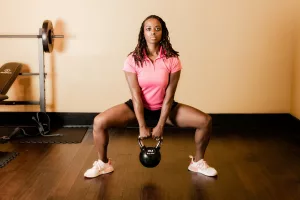Embarking on a fitness journey can be both exciting and daunting, especially when navigating the sea of exercise equipment available at most gyms. As a beginner, it’s crucial to avoid overwhelming yourself with complex machines and exercises that might do more harm than good. Let’s delve deeper into why certain pieces of equipment might not be the best choice for those new to working out, and explore practical ways to safely build your fitness foundation.
Understanding the Risks
Complex Cardio Machines
Starting off with intricate cardio equipment like stair climbers or rowing machines can feel like learning to drive a manual car on a busy highway. These machines demand not just physical coordination but also an understanding of how to adjust settings for optimal performance. For instance, improper rowing technique can lead to lower back injuries. Prioritize learning the correct form through instructional videos or sessions with gym staff before diving in. A practical approach is to start with simpler cardio options like stationary bikes, where you can easily adjust resistance and build endurance without the risk of injury.
Heavy Barbells
There’s a certain allure to lifting heavy, but jumping straight into heavy barbells without mastering the basics can be risky. Early on, the focus should be on building a strong foundation with bodyweight exercises or lighter free weights. Engaging a certified personal trainer, even for a few sessions, can profoundly impact your progress. They can teach you the nuances of good form—like maintaining a neutral spine during deadlifts—and help you gradually increase weight safely.
Suspension Trainers
Suspension trainers, such as TRX systems, are fantastic for full-body workouts. However, they require a significant amount of core strength and stability, which beginners often have yet to develop. Before integrating these into your routine, work on core-specific exercises like planks and bridges. As you progress, start with basic suspension exercises under supervision, focusing on form over intensity.
Kettlebells
Kettlebells can transform your workout through dynamic movements, but they demand precision. Incorrect form, particularly in movements like the kettlebell swing, can lead to wrist or lower back injuries. Begin with basic kettlebell exercises and gradually incorporate more complex movements as your confidence grows. Consider joining a class or workshop focused on kettlebell training, where you can receive immediate feedback on your technique.
Building a Foundation
Power Racks
Power racks are indispensable for heavy lifting, yet they can be intimidating for a beginner. Before stepping into a power rack, familiarize yourself with the mechanics of squats and bench presses using lighter weights or even just a broomstick. Understanding how to set the safety bars and practicing the movements without weights can boost your confidence and safety when you’re ready to lift heavier.
Plyometric Boxes
Plyometric exercises are fantastic for developing explosiveness and agility, but they can be hard on the joints if done incorrectly. Start with low-impact versions, such as step-ups or low box jumps, to condition your muscles and joints. Focus on proper landing mechanics—bending the knees and landing softly. This reduces the force on your joints and decreases the risk of injury.
Battle Ropes
Battle ropes offer a high-intensity workout, but starting with heavy ropes can strain your shoulders and back. Opt for lighter ropes initially, and concentrate on mastering a few basic waves and slams. As you develop strength and confidence, increase the rope thickness and try more advanced movements. Remember to maintain a strong stance with your knees slightly bent and core engaged.
Practical Tips for Safe Progression
Treadmills with Incline
Incline training on treadmills is excellent for upping the challenge, but it’s wise to build endurance on a flat surface first. As a beginner, focus on walking or light jogging while keeping an eye on your posture and stride. Gradually introduce incline intervals, starting with small inclines. Ensure you’re wearing appropriate footwear to support your feet and absorb impact.
Heavy Medicine Balls
Medicine balls can enhance core stability and coordination, yet heavier balls can be difficult to control. Begin with lighter balls and simple exercises like chest passes or Russian twists. As you become more adept, incorporate complex movements and incrementally increase the ball weight, always keeping form a priority.
Heavy Resistance Bands
Resistance bands are fantastic for a versatile workout. However, starting with bands that are too heavy can compromise your form. Choose lighter bands initially and focus on controlled movements, such as bicep curls or resistance band squats. Incremental increases in band resistance should align with your growing strength and stability.
Alpha Balls
Alpha balls are excellent for self-myofascial release, but beginners might not be familiar with how to use them effectively. Begin with softer balls and apply gentle pressure to avoid unnecessary soreness. As you learn more about muscle anatomy and tension points, you can tailor your routine to target specific areas more effectively.
New Considerations for Beginners
Elliptical Machines
Elliptical machines can seem like a friendly choice for beginners, offering a low-impact cardio option. However, improper use can lead to knee pain or ineffective workouts. Ensure you’re using the correct posture—standing tall with a slight bend in your knees—and adjust the resistance and incline to suit your fitness level. Start slow and gradually increase your pace as you become more comfortable.
Smith Machines
The Smith machine is often perceived as a safer alternative to free weights. However, its fixed path can encourage poor lifting mechanics, especially for squats and presses. If you’re new to lifting, use the Smith machine as a supplementary tool rather than your main one. Focus on mastering free weight movements first, where your stabilizing muscles are more effectively engaged.
Ab Rollers
Ab rollers can be an advanced tool for core workouts. Beginners often struggle with maintaining the correct form, which can result in lower back strain. If you’re just starting, build core strength with planks and other static exercises before advancing to the ab roller. When ready, start with kneeling rollouts and focus on controlled movements, keeping your core engaged throughout.
Avoiding Common Pitfalls
Overreliance on Machines
While machines can guide you through movements, they can also limit your range of motion and neglect stabilizing muscles. As a beginner, balance your workouts with free weights and bodyweight exercises to develop a well-rounded strength foundation. This approach not only improves functional fitness but also reduces the risk of injury.
Ignoring Recovery
Beginners often overlook the importance of rest and recovery, eager to see quick results. However, rest days are crucial for muscle repair and growth. Incorporate activities like yoga or stretching into your routine to enhance flexibility and prevent burnout. Listen to your body—if you’re feeling fatigued or sore, allow yourself time to recover.
Neglecting Nutrition
Exercise is only one part of a healthy lifestyle. Proper nutrition fuels your workouts and aids recovery. As you start your fitness journey, focus on a balanced diet rich in whole foods, lean proteins, and plenty of water. Consulting with a nutritionist or dietitian can provide personalized guidance to complement your fitness goals.
By understanding which equipment to approach with caution and how to safely progress, beginners can build a strong, injury-free foundation for their fitness journey. Embrace the learning process, seek professional guidance when needed, and most importantly, enjoy the transformative benefits of regular exercise.



